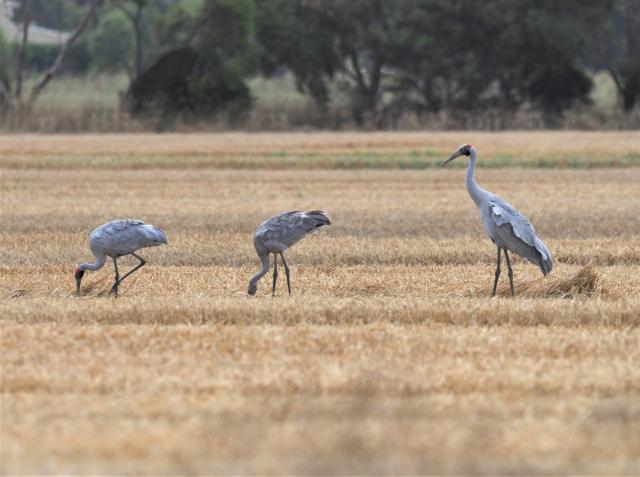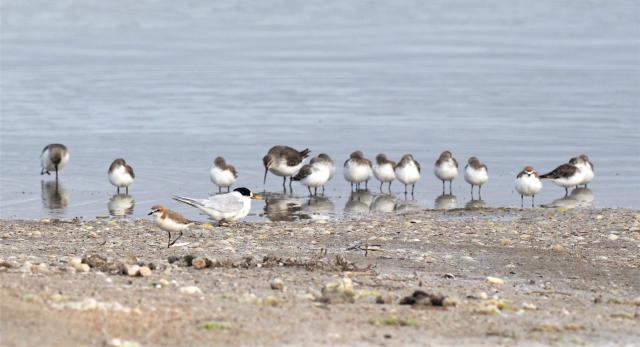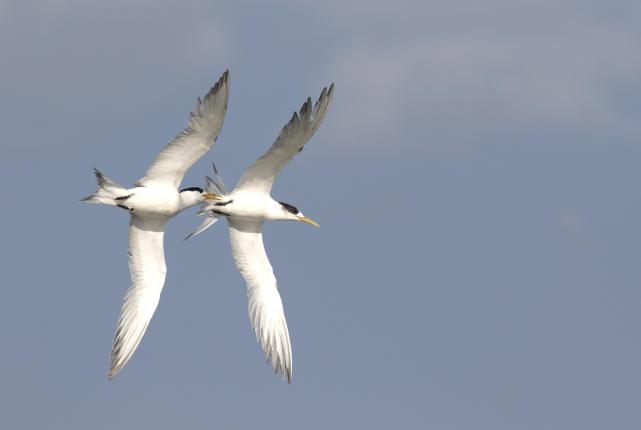I called in to Western Treatment Plant on my way home from Melbourne one day and saw a few white-winged black terns.
These amazing birds breed in eastern Europe and the Middle East and then migrate to Africa, Asia, Australia, and New Zealand. White-winged black terns are small marsh terns that are mostly seen in Australia during summer when they are generally in non-breeding plumage.
In the non-breeding season, they have white underparts, a black bill and legs, a grey back and tail, and a black horseshoe shaped mark across the crown and behind the eye.
There are usually large flocks of whiskered terns at Western Treatment Plant and Lake Connewarre at this time of year, but I haven’t seen many around this year, maybe because there is such a lot of water in northern Australia.
I saw around 10 Caspian terns at Hospital Swamp on my way to work one evening.
While working as a volunteer on the beach looking after the hooded plover hatchling at 19W, I have been photographing crested terns, which is challenging as in flight they twist and turn and perform aerial acrobatics.
The hoodie chick at 19W is thriving and there are two hatchlings at Point Lonsdale and one at Rhino Rocks. Please read the signs regarding dog rules on the beach and avoid disturbing the habitats of the hooded plovers.
The chicks are vulnerable before they fledge as they can not escape predators such as dogs foxes, cats, and gulls and there are only around 700 of these birds left in Victoria, so please help these chicks by following the guidance given by volunteers around the habitats.
Alan has been to Lake Victoria a few times at different times of day for the lighting and has observed plenty of birdlife. Alan photographed a tern which was identified by other birders as a fairy tern, but I think it’s a little tern due to the black on the beak (fairy terns have an all yellow bill in breeding plumage). I could be wrong and I’m sure I will hear from readers with their opinions which are welcomed.
Alan also was lucky to see three brolgas in a freshly harvested paddock off Portarlington Road, near the new lifestyle site, between the highway and the bay.
The brolgas were a good 150m away from the road with the sunlight behind them, so the lighting wasn’t brilliant, but Alan managed a fine photo.
Alan also photographed a great bird at Rice Reserve near Connewarre, namely a crested shrike-tit, one of his favourite birds.
I received an email from Brenton, who was walking in Point Lonsdale one morning near Nelson Road and heard the distinctive call of an eastern koel. I also heard two of them calling when I went to my friend’s house for morning tea in Point Lonsdale.
The koels were calling for about an hour but I didn’t see them, as they were very well hidden in the deep foliage. I had my camera at the ready but no luck.
I also received an email from Paul in Bannockburn, who reported that masked lapwings or spur-winged plovers had been nesting at the back of the Bannockburn College school oval in early December and students were continually harassing and throwing stones at them.
Paul wondered if anything could be done to protect the birds. I thought that creating a temporary fence around the habitat may provide some protection for the birds, and educating the kids to care about them and not be scared of them.










